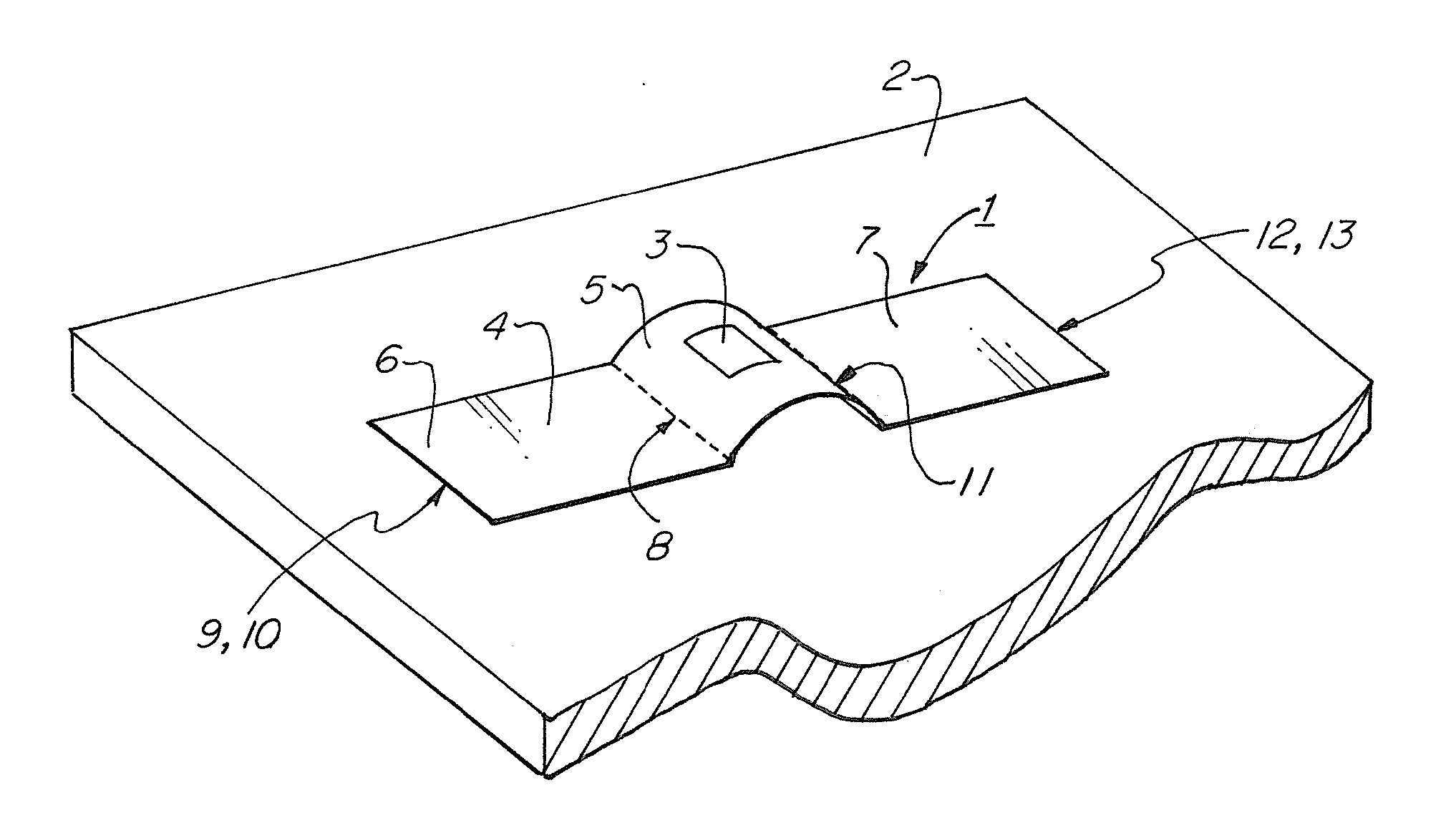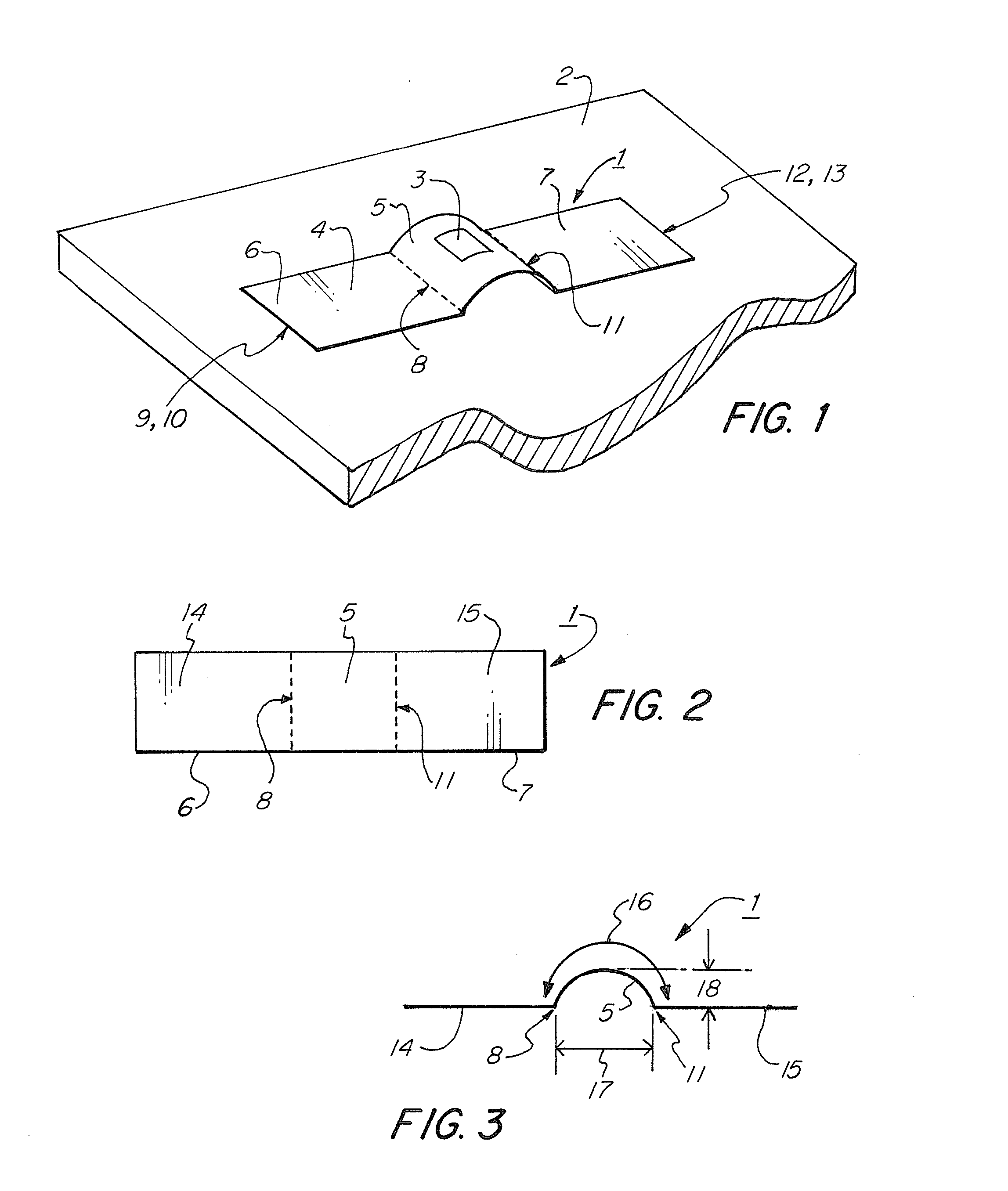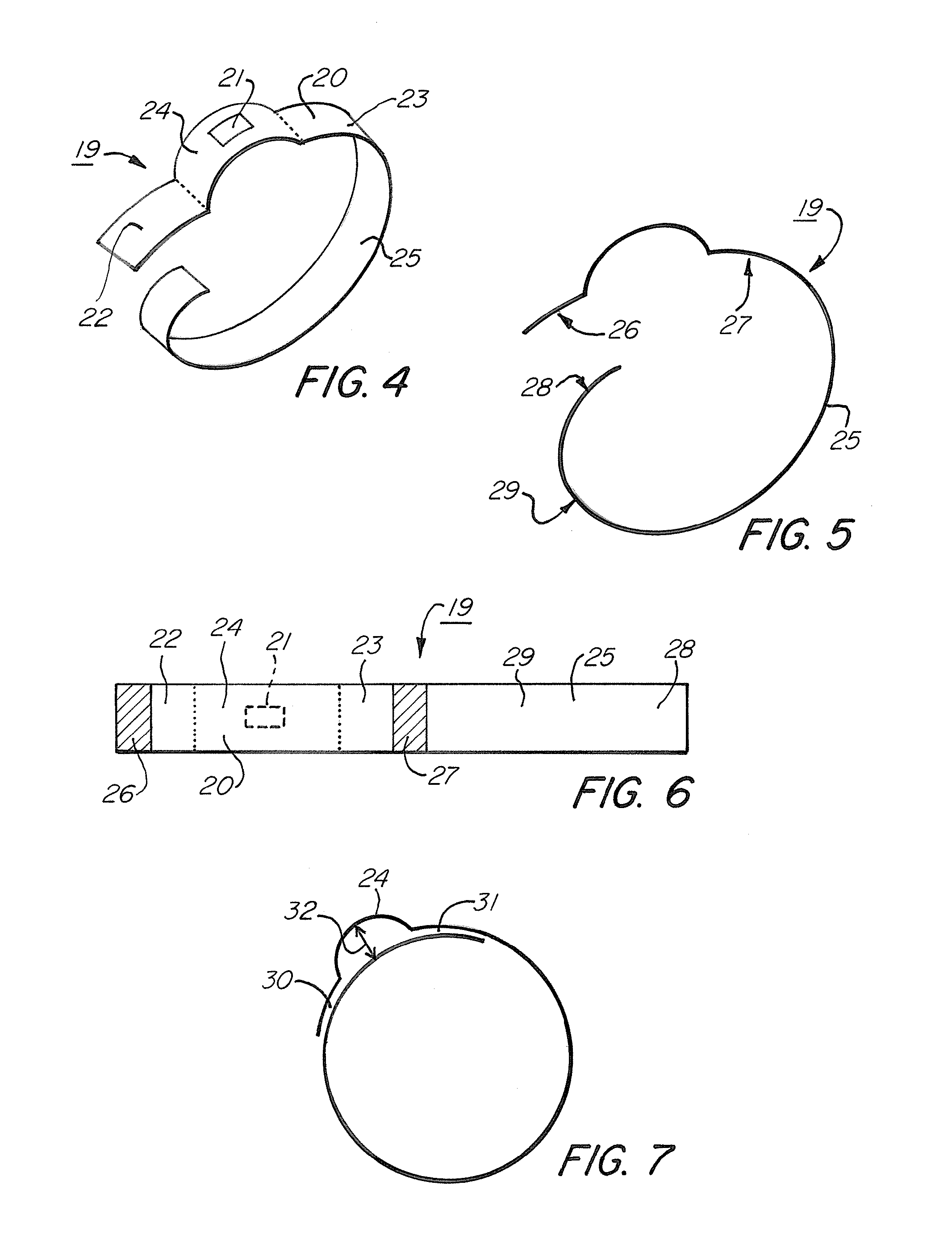RFID Chip Employing An Air Gap Buffer
a technology of air gap buffer and rfid chip, which is applied in the field of radio frequency identification (rfid) tags, can solve the problems of poor electromagnetic characteristics of rfid tags for the transmission of signals using common rfid operational frequencies, and the rfid tags can suffer from significant rf signal degradation, so as to reduce the degree of signal degradation caused by the proximity of the surface, the effect of reducing the rf signal degradation
- Summary
- Abstract
- Description
- Claims
- Application Information
AI Technical Summary
Benefits of technology
Problems solved by technology
Method used
Image
Examples
Embodiment Construction
[0020]FIG. 1 illustrates an overview of a RFID tag 1 affixed to a mounting surface 2, according to an embodiment of the invention. RFID tag 1 comprises an RFID inlay 3, and mounting strip 4. RFID inlay 3 may comprise a radio transponder, antenna, power source, microprocessor, and / or storage space, which together are adapted to receive a radio frequency signal from an RFID reader (not shown) and respond with a radio frequency signal containing information. RFID inlay 3 may be attached, laminated, incorporated into, or otherwise conformed to mounting strip 4 in a suitable manner. Mounting strip 4 may comprise a plastic, paper, composite, laminar, or other suitable material for affixing objects. In alternative embodiments, mounting strip 4 may comprise, in whole or in part, a tamper-evident material (not shown). Mounting strip 4 comprises central portion 5, first side portion 6, and second side portion 7. First side portion 6 has a first inner end 8 disposed toward the central portion ...
PUM
| Property | Measurement | Unit |
|---|---|---|
| radio frequency | aaaaa | aaaaa |
| length | aaaaa | aaaaa |
| frequency | aaaaa | aaaaa |
Abstract
Description
Claims
Application Information
 Login to View More
Login to View More - R&D
- Intellectual Property
- Life Sciences
- Materials
- Tech Scout
- Unparalleled Data Quality
- Higher Quality Content
- 60% Fewer Hallucinations
Browse by: Latest US Patents, China's latest patents, Technical Efficacy Thesaurus, Application Domain, Technology Topic, Popular Technical Reports.
© 2025 PatSnap. All rights reserved.Legal|Privacy policy|Modern Slavery Act Transparency Statement|Sitemap|About US| Contact US: help@patsnap.com



